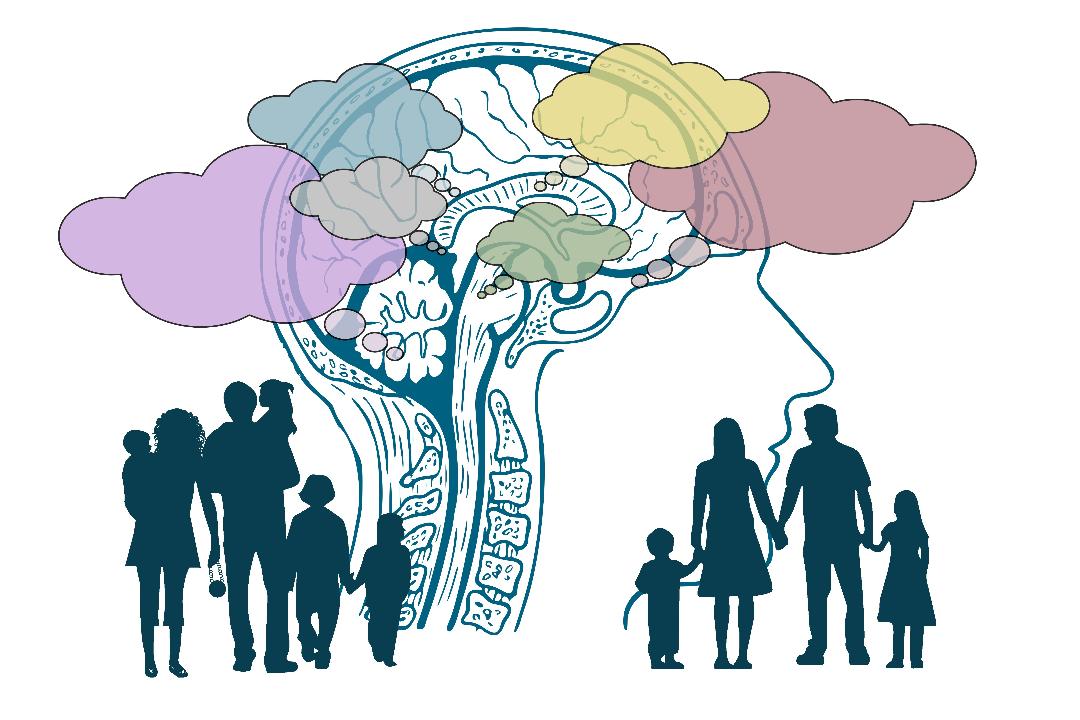When her friend, Felicia Awolusi, became pregnant at an early age, Julian Okonta sought a way to share sexual and reproductive health information with other young people kept in the dark about their bodies. However, as much as she tried with her campaign, many young girls and women who wish to avoid pregnancy are scared to use contraception out of fear that they will be abandoned.
One of such women who have opted out of family planning is Aisha Adeboye.
When she first considered family planning, she thought of the three-month contraceptive injection. But the stories she heard quickly changed her mind.
“I have heard a lot of terrible things about it. They say it makes you add weight, causes hormonal imbalance, makes your menstruation irregular, and makes your tummy big. I know two people who tried it and later looked for alternatives,” she said.
She, however, noted that the problem goes beyond side effects, as Nigerian women are also saddled with the responsibility of worrying about childbirth and family planning alone without any form of support from their husbands.
“It’s disheartening. They don’t want you to get pregnant, yet they want sex without as little as emotional support. Considering my fear, based on what I heard about the side effects of certain family planning methods; my husband and I resolved to do the withdrawal method – we have sex but he withdraws before ejaculation. That means I don’t need to do anything again,” she explained.
Ibidun Adewale, a mother of two, expecting child number three, said: “The non-stop heavy bleeding was so unsettling that I almost lost my mind – it felt so awkward to have to deal with blood and carrying tampons around every 30-minute. My body became a rain of blood; I could almost perceive it despite showering myself with niche perfumes. As though that wasn’t bad enough, headaches became a daily routine and over all body discomfort threatened my very existence. My doctor kept saying my hormones would adjust to the family planning implant but six months after, it got worse and I had to remove it – my overall health, especially my mental health was at stake,”
Adewale, who narrated the ordeal of her family planning implant to The Guardian, said, “I got pregnant again a month after removal and I am now in my third trimester expecting my third child any moment. However, after having this baby, until I figure out what works with my hormones, I will have my husband stick to condoms as much as we both dislike it or we stay off sex for the time being. Nothing will make me administer any family planning method that sets my entire body system in a state of discomfort again unless there is 99 per cent certainty of a suitable method.”
With diverse methods such as Barrier Methods (Condom); Hormonal Methods (pills, implant and injectables); Long-Acting Reversible contraceptives (LARCs such as IUDs), Natural Methods (Fertility cognisance) and Permanent Sterilisation (tubal ligation and vasectomy), a number of women, owing to the diversity and peculiarity of individual hormone causing painful side effects still struggle to safely and comfortably fit into a family plan that allows them control or space child bearing.
Despite progress on access to contraceptives and family planning, many people still face challenges. These include limited availability of certain methods, particularly in low-resource or rural settings, and barriers related to age, income, or marital status. Fear of side effects, misinformation, and social or religious opposition may discourage use.
According to experts on gynaecology and obstetrics (OB-GYNs), most side effects experienced by women using family planning methods are caused by the hormonal components contained in these contraceptives hence the necessity for adequate counseling, thorough medical assessment, and honest disclosure of reproductive history to ensure the safe and effective use of these methods.
On her part, Anita Osarieme’s story reflects the consequences of inaction that now have five children, which she and her husband can’t adequately provide for based on their low income.
She was scared of the negative narratives she’s heard about the side effects of family planning and unfortunately her husband didn’t know better. Now, they have little money and too many mouths to feed. According to her, the husband barely comes home.
“We live in a below standard single room with five children we can’t cater for, so he stays away from the house as an escape from responsibility,” Osarieme retorted.
For Madam Abike Jumoke, contraceptives come with painful complications. After hearing radio jingles in 2015, she opted for the injection. “This was when the problem started. I started bleeding heavily non-stop for over two months with huge clots. I was losing weight and always feeling dizzy. My family doctor later said I should have been properly tested before being placed on any method. Although I heard the implant method is better than injection, I don’t think I want to go that route again. I never went back to it. I know women who used it and started adding weight,” she said.
A family planning consultant, Jocelyne Nwalozie, explained that the presence of estrogen and progesterone in most modern contraceptive options is the primary cause of side effects in women who use family planning methods.
These hormones, she said, interact with the body in different ways, often leading to multiple side effects depending on individual physiology and medical history.
She stated that progesterone, in particular, could increase a woman’s appetite and cause fluid retention, which in turn may result in noticeable weight gain.
In addition, the hormonal changes may interfere with the production or function of other important hormones in the body, such as dopamine and serotonin, which are responsible for regulating mood and emotions. This disruption can lead to mood swings and emotional instability.
Nwalozie further said hormonal contraceptives could also cause thinning of the uterine lining or uterine erosion, which may result in spotting or irregular bleeding.
She explained that the severity and type of side effects vary among individuals, and are often influenced by genetic factors, pre-existing medical conditions, and the woman’s overall physiological makeup.
To reduce the risk of complications, she emphasised the need for personalised counselling sessions and proper medical screening before any method is administered.
 The initial assessment process, she said, should include checks such as weight and blood pressure monitoring, pregnancy testing, breast and pelvic examinations, screening for sexually transmitted infections (STIs), and blood sugar testing, depending on the method being considered.
The initial assessment process, she said, should include checks such as weight and blood pressure monitoring, pregnancy testing, breast and pelvic examinations, screening for sexually transmitted infections (STIs), and blood sugar testing, depending on the method being considered.
Nwalozie further explained that to determine the most suitable method for each woman, family planning healthcare providers must take into account a wide range of personal and medical information.
This includes the woman’s age, marital status and number of children already born and the number she intends to have, her breastfeeding status, and when she plans to become pregnant again.
Other important medical factors include a history of diabetes, hypertension, heart disease, bleeding disorders, liver disease, migraines, cancer, STIs, allergies, drug reactions, and any current medications in use.
Also speaking on the issue, a nurse, Julian Adegboyega said one of the most common side effects currently reported among users of family planning is excessive bleeding.
She noted that other common complaints include weight gain or loss, and elevated blood pressure levels.
Adegboyega emphasised that before placing any woman on a particular method, providers must find out whether the woman has experienced any abnormal bleeding in the past, the regularity of her menstrual cycle, the number of children she has, and the specific reason she is opting for family planning.
Based on this information, health professionals are able to recommend suitable methods tailored to each woman’s needs. She added that thorough assessments also involve educating the woman on what to expect when using family planning, including possible side effects and how the chosen method works to support child spacing.
The women health expert also noted that it is imperative for women to also know that while many family planning methods are available, not all methods work equally well for every woman, and adjustments may be required. If a woman reports negative side effects after starting a method such as an implant, the method is discontinued immediately, and a new option is considered.
Adegboyega pointed out that women using intrauterine contraceptive devices (IUCDs), for example, must maintain strict personal hygiene, particularly if they have a history of pelvic inflammatory disease or infections.
Poor hygiene can increase the risk of infection being transferred into the uterus, making it essential for women to fully understand how to care for themselves while on a given method.
She also identified lack of full disclosure from patients as one of the main challenges health providers face during family planning consultations.
The nurse explained that women often withhold important reproductive or medical history, such as previous abortions or irregular menstrual experiences, making it difficult for professionals to recommend the most appropriate method.
When such key information is missing, the provider may unknowingly make decisions based on incomplete data, which could lead to complications.
Adegboyega clarified that in most cases; healthcare professionals do not unilaterally choose a method for the woman. Instead, they provide guidance based on the woman’s medical and reproductive history, explaining the advantages and disadvantages of the various available methods. The woman then makes an informed decision, supported by the recommendations given by the health provider.
She added that there are several types of family planning methods available to women. These include mechanical methods, such as the use of female condoms; hormonal methods, including implants and intrauterine contraceptive devices; and traditional methods, where women monitor their body temperature and ovulation cycles to avoid intercourse during fertile periods.
In addition, couples who feel they have had the number of children they want may opt for permanent methods like vasectomy as a long-term solution.
The World Health Organisation (WHO) is working to promote access and use of contraception by producing evidence-based guidelines on safety and service delivery and on ensuring human rights in contraceptive programmes.
According to the WHO, among the 1.9 billion women of reproductive age (15–49 years) worldwide in 2021, a total of 1.1 billion have a need for family planning; of these, 874 million are using modern contraceptive methods, and 164 million have an unmet need for contraception.
Achieving universal access and the realisation of sexual and reproductive health services will be essential to fulfil the pledge of the 2030 Agenda for Sustainable Development that “no one will be left behind”.
However, access to contraception supports the fundamental human right to decide freely and responsibly the number and spacing of children. It also provides significant health benefits by preventing unintended pregnancies and reducing related health risks.
With 874 million women now using modern contraceptives, access to family planning supports public health, advances gender equality, strengthens health systems, and promotes economic development. An additional 70 million women are projected to gain access by 2030.
Family planning allows people to attain their desired number of children and determine the spacing of pregnancies. It is achieved through use of contraceptive methods and the treatment of infertility.
Access to family planning supports people’s right to make informed choices about their sexual and reproductive health. It plays a vital role in achieving broader development goals by promoting health, advancing gender equality, and supporting education and economic opportunity, contributions that align directly with SDG 3.7, which calls for universal access to sexual and reproductive health care, including family planning.






